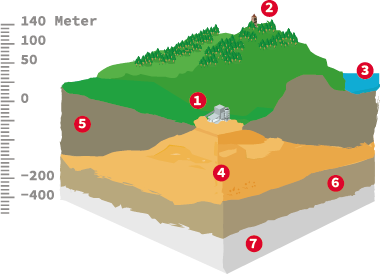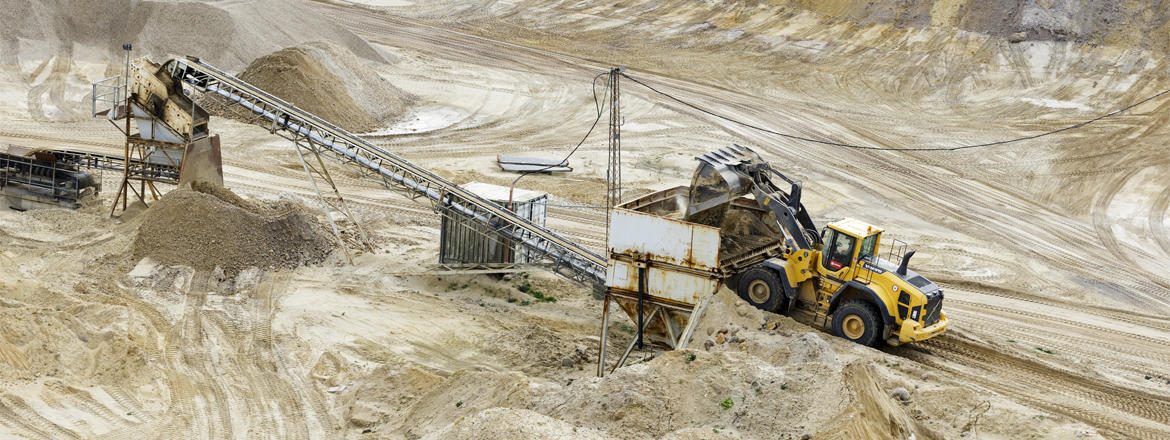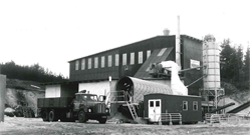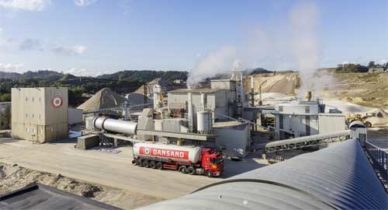Delivery time: 22 million years

![]() Addit/Dansand®
Addit/Dansand®
![]() Himmelbjerget, “Sky Mountain,” 147 meters above sea level
Himmelbjerget, “Sky Mountain,” 147 meters above sea level
![]() Lake Julsø
Lake Julsø
![]() Miocene silica sand, ”The Billund formation” (approx. 22 myo)
Miocene silica sand, ”The Billund formation” (approx. 22 myo)
![]() Quaternary sand and moraine clays (ice age deposits)
Quaternary sand and moraine clays (ice age deposits)
![]() Eocene, various deposits (up to 55 myo)
Eocene, various deposits (up to 55 myo)
![]() Paleocene, limestone (+55 myo)
Paleocene, limestone (+55 myo)
This illustration shows the layers of the underground near Dansand. The drawing is not to scale.
Dansand’s sand deposits in Central Jutland are of a very special nature. The sand was originally deposited here about 22 million years ago during the Miocene period. The land area, which is today southern Scandinavia, rose sharply, leading to a long period of high erosion. This allowed large amounts of sand to deposit, especially where there were large river deltas. Dansand – and the rest of Central Jutland – is located on top of such an ancient river delta. When sand is deposited as sediment in this way, it typically becomes very uniform in grain size – and it is precisely the uniform grain size that, together with the grain structure, makes our sand so special and so reliable.
We know for sure that the millions of tons of sand waiting to be used have the same grain structure.
Over millions of years, the sand deposits have been packed down under several layers of moraine, clay and lake deposits, but the special thing about our area is that the sand deposits are relatively close to the surface and thus easily accessible. At the same time, many of the sand deposits were laid down in an environment that was relatively poor in marine life, which explains why there are so few fossils to be found in the sand. The few that may be found have degraded over time.
250 cubic kilometers of sand
The formation that was formed in the large river deltas of the Miocene period, and which deposited enormous amounts of sand over millions of years, is known as the Billund Formation. It is located in the underground in central Jutland. Not all the sand is of the same fine quality as in our sand pits. But overall, the geologists estimate that up to 250 km3 of sand were deposited in the Billund Formation.







